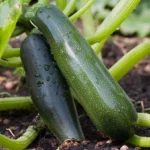Cauliflower – Flamenco F1
€3.50
Description
Cauliflower – Flamenco F1 is a very reliable variety with a heavy compact white curd. Very vigorous and well suited to the Irish climate.
Sowing:
In modules April – mid June. Plant out about 4 weeks later.
Spacing:
Between rows: 60cm
Between plants in the row: 60cm
Approx. seed count: 15
Growing Cauliflower – Flamenco F1
Latin name:
Brassica oleracea (Botrytis Group)
Family:
Brassicaceae (also known as Cruciferae)
Soil and site
Cauliflower – Flamenco F1 requires a fertile, deep soil. The ideal pH is 6.5-7.0. Acid soils can lock up essential trace elements and this may cause defects such as whiptail and tipburn.
Cauliflowers prefer cool growing conditions. A temperature of 16-18ºC combined with a moderately high humidity is ideal.
Sowing
I generally sow cauliflower in modular trays which are placed on a heating bench (18ºC) in a greenhouse. The alternative is a south-facing windowsill in the house. I sow one or two seeds per module about 1.5cm deep. If two seeds germinate you have to remove the weaker seedling. They usually germinate within 5 to 7 days and are ready for planting out about 4 weeks after sowing.
For tunnel and greenhouse production sow from late January until early April and again from mid June until late July.
For outdoor planting sow from April till June
Spacing:
A spacing of 20 x 20cm will produce small curds about 10cm in diameter. The spacing can be adjusted either way to get different sized curds. For example a spacing of 15cm x 15cm will produce curds of 6cm in diameter and a spacing of 25 x 25cm will produce 12cm curds.
Plant care:
The soil should be kept moist at all times. Good ventilation is essential to prevent fungal diseases.
Harvesting
If the cauliflowers are not harvested on time the curds will turn brown and rot.
When harvesting cauliflowers you should keep their leaf wrapping intact to protect the curd from damage.
Potential problems
Cauliflower is susceptible to the same pests and diseases as cabbage and the same control measures are recommended.
Cauliflowers may also encounter other problems such as whiptail and tipburn.
Whiptail can be a problem on acidic soil where molybdenum is made unavailable to plants. The plants develop chlorosis (yellowing) between the leaf veins and in severe cases they may develop ‘blind growth’ (absence of growing point). Once the damage is seen it is too late to rescue the crop but liming the soil will help in future years.
Tipburn may also be a problem on acidic soils. The symptoms are brown margins on younger leaves and a discoloration of the curds. This is caused by calcium deficiency.
How much to grow?
For mini-cauliflowers at a spacing of 20 x 20cm you’ll get 20 mini-cauliflowers per square metre.
For more information have a look at my monthly newsletters on:
https://greenvegetableseeds.com/newsletters/
For information on organic certification:
Have a look at the Irish Garden magazine:




